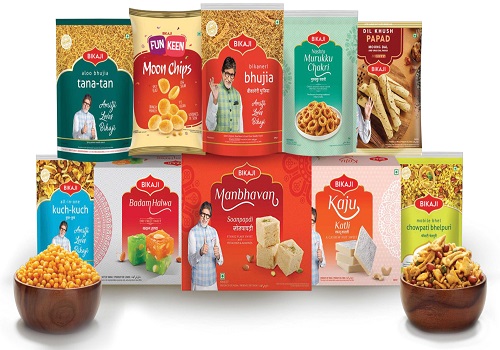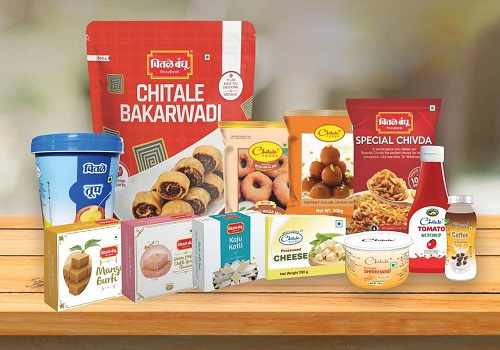By Priya Raj
| The Volza’s India Export data for November 3, 2023, provides a comprehensive overview of India’s performance in the global sweet export market. India is the leading exporter of sweets, with 444,556 shipments facilitated by 8,038 Indian exporters and reaching 23,034 buyers worldwide. The primary export destinations for Indian sweets are the United States, Australia, and Canada. Ecuador follows as the second-largest exporter with 168,489 shipments, and Germany secures the third spot with 149,387 shipments. The export data is categorized based on Harmonized System of Nomenclature (HSN) codes, highlighting the top three product categories of sweet exports from India. This information is sourced from Volza’s Export Import data, covering shipments from 70 countries and offering comprehensive details such as buyer and supplier names, as well as contact information for key decision-makers. On December 13, 2023, India’s Namkeen exports reached 283,800 shipments, involving 1,417 Indian exporters and serving 3,880 buyers globally. The primary destinations for Indian Namkeen exports are the United States, Australia, and the United Kingdom, solidifying India’s position as the largest exporter of Namkeen worldwide. China and Spain secure the second and third spots as top Namkeen exporters. India’s robust export performance in Namkeen underscores its significant role in meeting the increasing global demand for these products. As of December 13, 2023, India continues to strengthen its position as a key player in both the sweet and Namkeen segments of the global export market. |
Synopsis:
As global tastes adapt and grow more open to new culinary experiences, traditional Indian sweets and snacks have gained popularity. Their distinct flavours, textures, and cultural importance contribute to their expanding global popularity.
This study goes beyond the prior interviews and research, concentrating on the growing export potential of traditional Indian mithais and namkeens as key components of India’s food product exports. The review gives a thorough grasp of the reasons driving export potential, such as their appeal to foreign customers, the expanding need for ethnic cuisines, and their adaptability to varied markets.
This research examines market dynamics, trade policies, and economic drivers to give insight on the complex environment of exports. It also emphasises the importance of technical breakthroughs and improvements in packaging and preservation, which solve issues connected with international shipping while increasing the shelf life of mithai and namkeen.
The study’s goal is to discover strategies to meet the growing worldwide demand for authentic and diverse culinary experiences by investigating the cultural and culinary significance of these delicacies.
Recognising the importance of government efforts and industry cooperation, the research investigates how these things might be promoted on a worldwide basis. It emphasises the potential influence of such initiatives on expanding the reach of Indian mithai and namkeen.
The investigation begins with interviews with important market participants who have contributed vital insights, revealing the untapped potential for Indian mithai and namkeen in international markets. This investigation provides critical information for stakeholders, governments, and businesses looking to capitalise on the growing global demand for original and diverse culinary experiences.
Key factors contributing to the global export potential of Indian Mithai and Namkeen

In a conversation with Dr Kamal Kumar Agarwal, Haldiram Foods International Pvt. Ltd., Nagpur, MNT sought his insights on the current topic. His response provided a concise and clear definition, shedding light on the subject matter.
“Indian mithai and namkeen have a significant global export potential due to their diverse flavours, traditional recipes, and growing interest in Indian cuisine. The use of high-quality, locally sourced ingredients enhances the authenticity and taste of these products, while continuous innovation in recipes resonates with a global audience seeking diverse culinary experiences.
The Indian government supports export efforts by promoting international quality standards, implementing trade agreements, facilitating market access initiatives, and emphasizing training and skill development for manufacturers and exporters. These measures contribute to the global competitiveness of Indian sweets and snacks, fostering their recognition and acceptance in the international market.”
Going further with our study, MNT approached Indraneel Chitale, Partner, Chitale Bandhu Mithaiwale from Pune.

Indraneel contributed his perspective, emphasizing the global diaspora of Indians and their increasing affluence abroad. According to him, the trend of Indians traveling worldwide, settling in different countries, and securing high-paying jobs has led to a rise in demand for Indian products on a global scale. This growing affluence has not only extended the reach of Indian products beyond local stores to supermarkets but has also played a crucial role in shaping trade relations.
He highlighted the proactive role of the government in enhancing global trade relations and the potential benefits for the industry through certain Free Trade Agreements (FDAs). Indraneel‘s insights underscore the significant impact of the Indian diaspora’s financial stability abroad in promoting and expanding the presence of Indian products in the international market.

Mitesh Thakkar, Jagdish Food Zone Pvt Ltd was very extensive in his explanation. He went on to add that the global export potential of mithai and namkeen is influenced by various factors, and the Indian government has taken steps to promote the export of these traditional food items. Here are some key factors and initiatives:
Indian sweets and snacks are a popular choice for global consumers seeking exotic food experiences. These products are deeply rooted in the country’s cultural and festive traditions, often using natural ingredients like nuts, spices, and grains. Modern packaging and presentation enhance their visual appeal, while adhering to international quality standards and certifications ensure consumer trust and regulatory compliance.
The Indian government supports the export of mithai and namkeen through Export Promotion Councils like APEDA, TPCI, and FIEO. These councils provide guidance, support, and promotional activities to boost the international presence of these traditional Indian delicacies. The government may also extend financial incentives, subsidies, and credit facilities to incentivize exporters.

Nishant Balecha, Head of Exports at Bikaji Food International, highlights the global export potential of Indian sweets and savoury snacks, citing their diverse flavours, cultural significance, and appeal to a global consumer base. He emphasizes the importance of high-quality ingredients and traditional recipes, as well as the role of effective packaging, presentation, and strategic positioning.
Nishant also highlights the Indian government’s proactive steps to promote exports, including the role of agencies like APEDA in implementing export promotion schemes, financial incentives, subsidies, and credit facilities, and its active involvement in trade negotiations to reduce trade barriers and create a conducive environment for export.

Aakash Kandoi from Jagdish Farshan Pvt Ltd voiced that the growing Indian population across the globe, particularly in countries like the USA, UK, Canada, the Middle East, and Southeast Asia, creates a natural market for Indian mithai and namkeen. “Our rich flavours in namkeens and processed food have gained popularity internationally, boosting the demand for authentic Indian sweets and snacks”.
The focus on quality and packaging has increased due to advancements in quality control, packaging technology, and shelf-life extension. This has made exporting products more accessible, ensuring freshness and taste. The rise of e-commerce platforms and efficient global distribution channels has made international marketing easier.
The government has taken strategic initiatives to boost Indian food exports, organizing and participating in international trade fairs and food exhibitions. These events showcase the diverse range of Indian food products, creating opportunities for exporters to establish connections with international buyers. The Indus Food Expo 2024 was a notable example of these efforts.
Stepping ahead with our next question about how the demand for traditional Indian sweets and snacks changed in the international markets in recent years?

Agarwalji reports a surge in demand for traditional Indian sweets and snacks in countries like the US, UK, Middle East, Canada, Australia, and Southeast Asia. This demand is driven by cultural appeal, diverse flavours, and a global trend towards healthier snack alternatives, as well as the growing interest in these culinary delights.
Indraneel highlights a shift in demand for traditional Indian sweets and snacks in international markets. The United States is the most mature market, with a strong interest in Indian mithai and namkeen. The Middle East, Europe, and the UK also show increasing affinity for these products.
Australia and New Zealand, particularly following the Free Trade Agreement, have experienced sustained demand for Indian mithai and namkeen due to the trade agreement. The emerging market in Africa is also gaining interest in a diverse range of Indian sweets and snacks.
Mitesh informs that the US, UK, Middle East, Canada, Australia, and Southeast Asian countries like Singapore and Malaysia are the most mature markets, driven by diverse populations and Indian cuisine popularity. The Middle East, particularly UAE and Saudi Arabia, also shows substantial demand during festive seasons.

Nishant analyses changing dynamics in the demand for traditional Indian sweets and snacks in international markets. The significant Indian diaspora in countries such as the United States, Canada, the United Kingdom, and the Middle East contributes to a strong demand for Indian mithai and namkeen. The rising popularity of vegetarian and plant-based diets globally has further fuelled the demand for Indian snacks.
Countries exhibiting a higher demand for Indian sweets and snack products, as outlined by Nishant, include the US, the UK, Canada, the Middle East, and Australia.
According to Aakash, real regional essence of traditional Indian mithai and namkeen captivates worldwide audiences with considerable regional variances in distinct flavours. There is a significant demand for these snacks because to the growing trend of people preferring traditional flavours in processed and frozen meals, which has prompted their introduction into local markets. Notably, the demand for Indian mithai and namkeen is highest in the United States, Australia, and Canada.
MNT intersected its third query: Quality standards/certifications are vital for Indian Mithai and Namkeen for global export, and how can manufacturers use e-commerce platforms for global distribution?
Agarwalji underscores the importance of quality standards and certifications for Indian Mithai and Namkeen when aiming for global export. Essential certifications include ISO 22000, HACCP, FSSAI, BRC Global Standards, and Halal Certification. These standards ensure that products meet international quality and safety requirements, building trust with global consumers.
To leverage e-commerce platforms for global distribution, manufacturers can employ several strategic approaches:
Indian mithai and namkeen should work with international e-commerce giants like Amazon and Alibaba to grow the market. To improve worldwide awareness, put into practice effective digital marketing techniques like social media, SEO, and online advertising.
Establish specialised e-commerce sites with safe payment channels that highlight the excellence and authenticity of Indian mithai and namkeen. Work together with foreign distributors to access new markets and broaden the distribution network. Following customs laws is essential for efficient logistics and reducing hold-ups. Examine consumer input to learn about preferences and make product improvements that will guarantee ongoing quality improvement.

Indraneel discusses the importance of adhering to FSMS22000 and US FDA-BRC certifications for Indian mithai and namkeen in global export. These certifications ensure compliance with international food safety and quality standards.
However, he also acknowledges the challenges of e-commerce in the food industry, such as the high logistics costs that often exceed product costs.
He suggests that manufacturers should leverage channels like distributors or subsidiaries to generate demand, ensuring sustainable, generic, and repeated demand. This approach is not solely driven by promotional schemes, but also by a more strategic and cost-effective approach to global distribution. This approach not only addresses the cost dynamics of e-commerce but also establishes a foundation for long-term, sustainable growth in international markets.

Mitesh offers a detailed guide on the quality standards and certifications for the global export of Indian mithai and namkeen, emphasizing the need for international regulations. He advocates for a strategic approach to global distribution through e-commerce platforms, focusing on visual appeal and user-friendly design.
Mitesh also highlights the importance of partnering with major global e-commerce players like Amazon, optimizing product listings, ensuring comprehensive information, efficient shipping, and excellent customer support. He also suggests leveraging digital marketing strategies to enhance visibility and drive sales on e-commerce platforms.
Nishant’s guide for mithai and namkeen manufacturers emphasizes the importance of adhering to quality standards and certifications. Food safety standards like HACCP and ISO 22000 are crucial for identifying hazards during production. Product-specific certifications like FSSAI regulations and the BRC Global Standard for Food Safety are recommended.
Halal Certification is essential for Muslim-majority markets, while Vegetarian and Vegan Certifications broaden product appeal. E-commerce platforms like Amazon and Alibaba are recommended for global reach, while independent websites for brand control and secure payment gateways are suggested. Collaborating with global distributors specializing in ethnic foods or target markets is also recommended. Localization of marketing materials is crucial for local consumers.

Aakash highlights those certifications like FDA Approval, FSSAI, and HACCP are essential for companies that want to grow internationally. The adherence to global standards for food safety and quality is guaranteed by these certificates.
Further to his reply, Aakash added that putting goods on well-known international e-commerce sites like Amazon, Alibaba, and eBay provides access to a large worldwide consumer base. Reaching a wide range of audiences may be made easier by taking advantage of the well-established logistics and distribution networks of these platforms.
Aakash advises using nation-specific e-commerce platforms or collaborating with regional wholesalers to facilitate market access. Through these strategic alliances, companies may more easily enter new markets by navigating legal and cultural subtleties.
Concludingly MNT offered its final questionas to what are the challenges hindering the export of Indian Mithai and Namkeen
Agarwalji identifies core challenges in exporting mithai and namkeen, including perishability, packaging compliance, quality consistency, customs barriers, and competition with local brands. To overcome these, strategic measures are proposed, including investing in research and development, adopting global packaging standards, building partnerships with local distributors, obtaining relevant certifications, cultural storytelling, participating in international trade shows, customizing product offerings to suit regional tastes, and leveraging e-commerce platforms for direct-to-consumer sales. These strategies not only overcome hurdles but also position Indian mithai and namkeen as culturally rich offerings for global consumers, fostering successful trade partnerships with international distributors.
Indraneel identifies a significant hurdle to the export of Indian sweets and snacks, namely the ban on dairy products in certain regions, particularly in the European Union. This poses a significant challenge for manufacturers seeking to access markets with stringent compliance clauses.
However, Indraneel expresses confidence in the potential for change, suggesting that as more Indian manufacturers become compliant with international regulations, the barriers to entry into markets with dairy restrictions may gradually diminish. This optimism indicates the adaptability and growth potential of Indian manufacturers, paving the way for increased accessibility to markets with dairy-related constraints.
Mitesh has identified several challenges affecting the export of Indian Mithai and Namkeen, including quality and safety concerns, packaging and shelf-life issues, regulatory compliance, logistics and transportation costs, cultural preferences, market access, competition from local brands, and currency fluctuations with payment challenges.
To overcome these issues, Mitesh proposes investing in quality certifications like FSSAI, ISO, and HACCP, implementing rigorous quality control measures, and addressing packaging and shelf-life issues through modern packaging technologies and clear labelling. Regulatory compliance requires staying informed about requirements and obtaining necessary certifications. Optimizing logistics and transportation costs can be achieved through fine-tuning supply chain logistics, forming partnerships with reliable providers, and considering bulk shipments. Addressing cultural preferences can be achieved through market research and product adaptation. Currency fluctuations and payment issues require strategies like hedging against risks, establishing secure payment mechanisms, and building strong relationships with financial institutions.
Voicing his thoughts, Nishant said that Indian exports of mithai and namkeen face challenges such as packaging, regulatory compliance, logistics, cultural preferences, market entry barriers, and economic and currency fluctuations. To overcome these obstacles, a strategy involves investing in durable packaging solutions, staying informed about target markets’ regulations, obtaining necessary certifications, and ensuring quality standards.
Efficient transportation of perishable goods can be achieved through partnerships with logistics providers, supply chain optimization, and minimizing transit times. Market research and tailoring products to local tastes are essential for adapting to cultural preferences. Overcoming market entry barriers involves collaboration with local trade associations, negotiating favourable trade agreements, and participating in international trade fairs. Digital marketing, e-commerce platforms, and partnerships with international distributors and retailers can help expand trade and diversify into international markets, added Nishant.
In his conclusion, Aakash lists a number of obstacles and solutions pertaining to the international export of Indian culinary items. Complying with international rules requires meeting strict quality and safety requirements, which include concerns for ingredient quality, cleanliness, and packaging. Long-distance export is hampered by the short shelf life of items like mithai and namkeen, which calls for ways to maintain freshness throughout storage and transportation.
The way that Indian tastes are marketed overseas might be influenced by differences in cultural taste preferences. Additionally, significant expenditures in marketing and distribution networks are necessary to establish a brand presence in foreign markets. The difficulties of exporting are further compounded by logistical difficulties, particularly with regard to perishable goods, and regulatory obstacles like taxes and customs processes.
In order to get past these obstacles, Aakash recommends tactics like forging trustworthy local partnerships to create distribution networks, making research investments to increase shelf life without sacrificing quality, and requesting assistance from the Indian government in the form of export incentives, subsidies, and diplomatic trade negotiations. All of these steps are intended to increase Indian food exports’ competitiveness in the international market.


